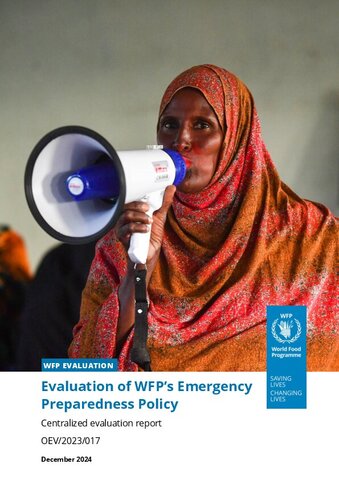
The evaluation of WFP's Emergency Preparedness Policy (2017) assessed the quality and results of the policy, along with the factors that enabled and hindered those results. It covered the period 2018-2024.
The evaluation concluded that:
- The policy framed and guided the development of WFP’s various emergency preparedness work streams, although limited conceptual clarity hindered the policy’s alignment with other WFP efforts on disaster risk reduction, climate change adaptation, and resilience.
- While responsibilities stipulated in the policy were duly met across WFP, reflecting the cross-functional nature of emergency preparedness, gaps in coordination and guidance led to fragmentation.
- Overstretched resources limited WFP’s ability to implement the policy. Diverse mechanisms for accessing funds, stocks and surge personnel for preparedness enabled WFP to act quickly and flexibly, but constraints in accessing advance financing to invest in preparedness exist.
- WFP increased the capacity of its personnel for preparedness, early action and response, but there is room to improve its surge capacity mechanisms.
- Substantial efforts were made to strengthen governments’ emergency preparedness, improving capacities and skills in diverse sectors, whereas results at community level were less visible.
- WFP needs to leverage on its comparative advantages in emergency preparedness, with stronger internal prioritization and more flexible funding.
- More robust evidence on the effects of preparedness would strengthen the case for greater investments in this area and support resource mobilization.
- To fully integrate a gender-sensitive approach and disability inclusion in preparedness work, WFP would require a better understanding of underlying inequalities.
- WFP made considerable contributions to collective preparedness efforts, particularly through partnerships with national governments and the work of global humanitarian clusters. On the other hand, partnerships with private sector, cooperating partners and development actors lacked clear direction.
